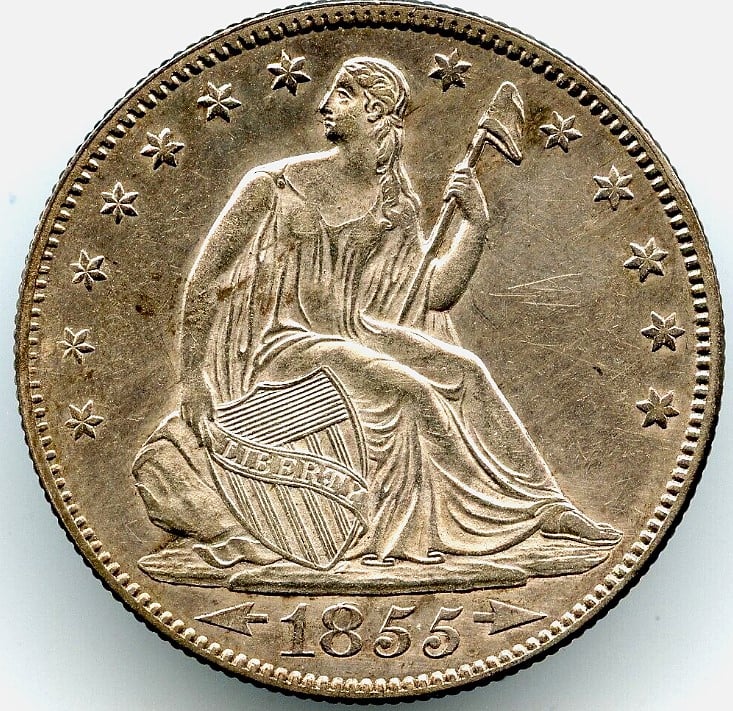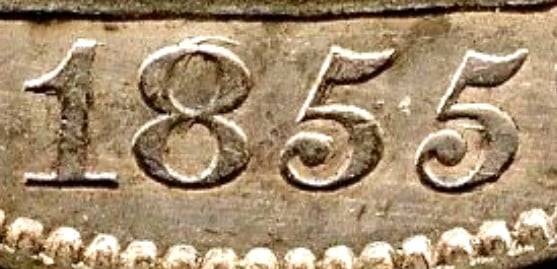I don't want to be that guy, but... I have questions about error/toned coins.
 Tibs
Posts: 16 ✭
Tibs
Posts: 16 ✭
Hopefully I'm not being one of those obnoxious "did I just find a goldmine in my change today?" kind of people by posting this.
I own a considerable collection of Lincoln cent rolls that I've been slowly crawling through recently to sell some. Point being, I keep coming across coins that I'm unsure if they are errors or damage. There are the typical weak die, grease filled die, and occasional die chips, but the rest I'm unsure what I'm looking at. It's easier to assume damage on circulated cents, but on the uncirculated ones I'm always unsure.
I decided to finally post and ask after finding this in a roll of 1939-S cents. I was initially going to sell it as an damaged coin until I saw how clean the tear is on the wheat stalk. I'm curious how this could happen and only leave a stain, but no perceivable scratches or deep gouges?
1) 1934-D, 2) 1932-P. How do you differentiate between damage and a lamination error? The misshapen lip on the 34-D makes me question if it was some kind of damage, but the folded over lamination above that confuses me. The 32-P I just can't imagine how that happens. The crack curves along the letter U at the top. I guess the ultimate question is, even if these are lamination errors, if/when I find these kinds of coins are they worth anything above circulated value, or conversely worth less?

Similar to above, how do you tell an improper alloy mix from some kind of chemical splash that caused streaking? And is it worth even trying to decide or should the coin just be popped in a starter album and sold for cheap?
Last but not least... when are toned cents worth separating out (or potentially having graded)? I know there are fake toning solutions because I bought some just to play with back in 2008, but the effect seemed quite obvious to me. Are there less obvious fakes to be concerned about? If one is found in circulation, is it still worth collecting or should I just assume it's come in contact with some kind of foreign substance?
The 38 was an end coin from one of my BU rolls. The very colorful dark one that is my PFP is another end coin from a 1952-S roll and sadly has a light fingerprint on the otherwise perfect obverse. The 16-D was found in my change a few years back.





Comments
Those are some nice finds! The Lincoln lamination error is really nice in my opinion. You can find several lamination errors on eBay. Cents are running from $5 on up but most are in the lower cost range…$5-$30 depending on severity and of course, condition. . War nickels are notorious for having lamination errors and are fairly easy to find. Good luck with the hunting! Cheers, karl
Welcome, one can milk a few bucks for them on eBay, but there’s a lot of competing cent error offers there, as well as many more offers that are not legit. Use the sold filter to compare after your search.
Maybe others will add better suggestions.
Many collectors consider laminations a major negative. If you can find anyone to pay a premium for them take the money and run.
Much the same can be said for so-called wood grain toning. Some collectors love it while others hate it.
Always carefully consider selling costs when marketing such coins. Will it cost you more to find a buyer than you will make by selling it. Is it worth the time you put into the selling effort?
Welcome.
A good protocol to follow when you post is to be descriptive in titling your threads. This gives other members the ability to decide if they have something to contribute or to move on to a different thread that is more of interest. This suggestion isn’t a rule but a courtesy. Good luck with your finds!
"She comes out of the sun in a silk dress,
running like a water color in the rain...."
Valid. I've updated the title. Apologies for any unnecessary distractions

Glad to see others are using the Sold filter these days. It's something I've done for many years.
I kind of came to the same conclusion using it to look at error coins, but I also see the occasional $100-150 sale that seems far above its value. I suppose what it boils down to is being willing to wait it out for a buyer or an offer.
Makes sense. I don't find the lamination errors attractive and would gladly sell them even to just break even rather than take a loss. The wood grain though is kind of cool in my eyes. I appreciate the honest feedback!
I do it from time to time, but one risks being horrified by the rare varieties or dirt-cheap BINs that escaped one's notice and "got away." Here's a big one that got away somehow.
1855/54 WB-1 - $333 off eBay - easily a $1500 coin - bummer


Not all of those outlier prices represent real sales.
And if I stumble across someone who has unrealistically priced coins, I don't even look at them, especially if they are minor "errors". My assumption would be that the seller is either ignorant or intentionally trying to take advantage of ignorant people.
All comments reflect the opinion of the author, even when irrefutably accurate.
I know this feeling all too well!
Completely valid. I do the same thing when I see people selling a bunch of seeded "unsearched" rolls. Unsearched in the last five minutes since they put the coins in and used a fake bank stamp, maybe.
GPT actually reminded me about Shill Bidding last night and I realized that some of those high sales are probably fake, canceled transactions in an attempt to drive up the market or dupe unsuspecting buyers into thinking they're getting a deal for $40.